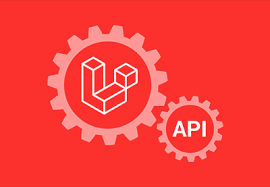If you are looking for a PHP framework that can help you build and test a RESTful API with ease, you might want to check out Laravel. Laravel is a popular and modern framework that follows the MVC (Model-View-Controller) pattern and provides many features and tools to make web development faster and more enjoyable.
In this post, I will give you a brief introduction to what RESTful APIs are and how you can use Laravel to create one.
What is a RESTful API?
A RESTful API is an application programming interface that follows the REST (REpresentational State Transfer) principles. REST is an architectural style that defines how applications communicate over HTTP using standard methods and formats.
Some of the main characteristics of a RESTful API are:
- It uses HTTP verbs (GET, POST, PUT, DELETE) to perform actions on resources (data or entities).
- It uses URLs or endpoints to identify and access resources.
- It returns responses with status codes and data in JSON or XML format.
- It is stateless, meaning it does not store any information about the client or the session between requests.
A RESTful API allows different clients (such as web browsers, mobile apps, or other servers) to interact with your application data in a uniform and consistent way. It also makes your application more scalable, maintainable, and testable.
How to Build a RESTful API with Laravel?
Laravel makes it easy to build a RESTful API by providing several features and packages that simplify the process. Some of them are:
- Routing: Laravel allows you to define routes for your API endpoints using a simple syntax. You can also group your routes by prefix or middleware for better organization.
- Eloquent: Laravel’s ORM (Object Relational Mapper) lets you interact with your database using expressive models and queries. You can also use Eloquent resources and collections to transform your models into JSON format for your API responses.
- Validation: Laravel provides powerful validation rules and messages that you can use to validate your API requests and ensure data integrity.
- Authentication: Laravel offers various options for authenticating your API users, such as token-based authentication using Laravel Sanctum or OAuth2 using Laravel Passport.
- Testing: Laravel provides several tools and helpers for testing your API endpoints, such as PHPUnit, Faker, Http client, etc.
To get started with building a RESTful API with Laravel, you will need to:
- Create a new Laravel project using Composer or the Laravel installer.
- Set up your database connection and run migrations for your models.
- Define your routes for your API endpoints in the routes/api.php file.
- Create controllers for handling your requests and returning responses.
- Use Eloquent models, resources, collections, validation rules etc., as needed in your controllers.
- Test your API endpoints using tools like Postman or Insomnia.
You can find more details and examples on how to build a RESTful API with Laravel in the official documentation or in some of the tutorials available online.
I hope this post gave you some insight into what RESTful APIs are and how you can use Laravel to create one. Happy coding!




